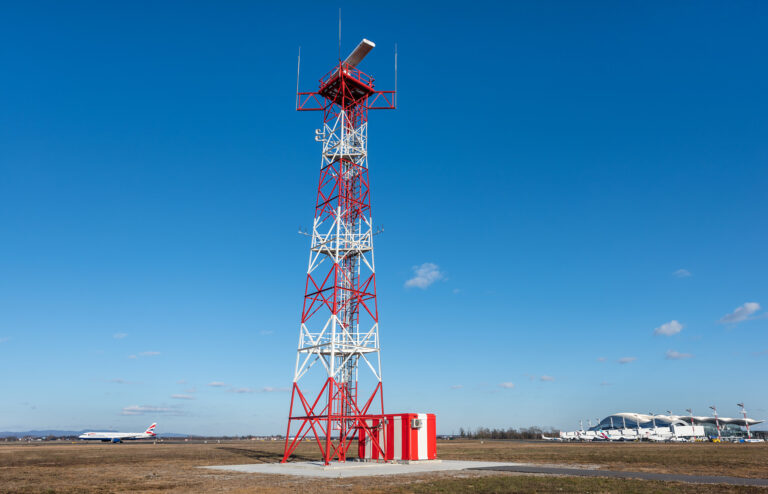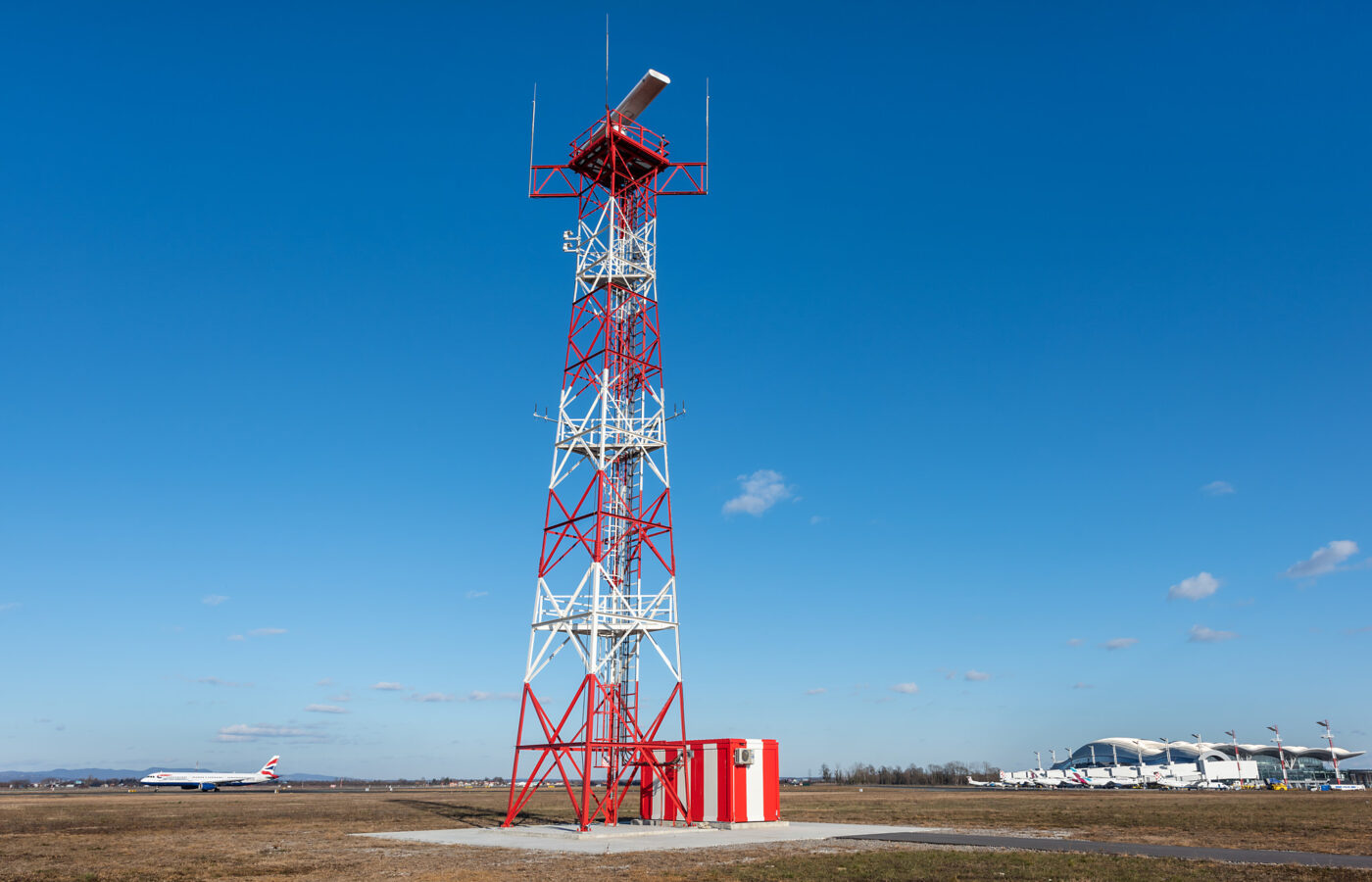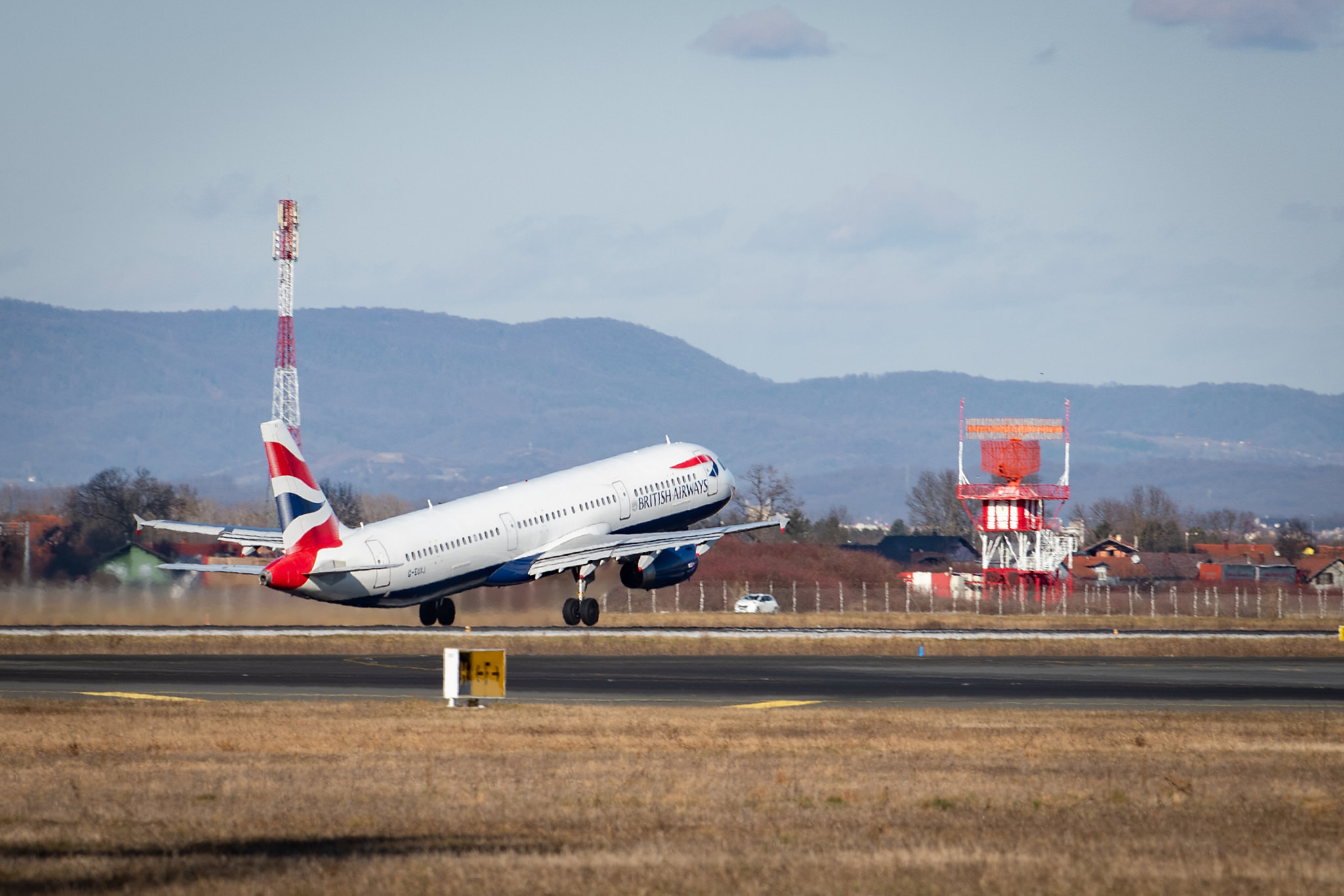Services
Technical Services

We use state-of-the-art technology to develop systems and infrastructure for maintaining the quality of our services and safety of air traffic.

Technology
Today’s world of Air Traffic Control is marked by the rapid advancement of technology, steady growth of European air traffic and the requirements of the Single European Sky. To address those challenges, we are introducing new technologies and systems to increase safety and partially automate Air Traffic Control.
Those systems are:
- ATM Data Processing Systems
- Voice Communication Systems
- Data Communication Systems
- Navigation Systems
- Air Traffic Surveillance Systems
- Meteorological Systems
- Telecommunications and Network Infrastructure Systems
- Electric Power and Air Conditioning Systems.
Our team of highly-trained engineers monitors, maintains and improves the systems and actively participates in international development programs.
The monitoring and control of technical systems and devices is being provided continuously 7 days a week, 24 hours a day.
ATM Data Processing Systems
ATM systems are advanced systems which use sophisticated algorithms to generate and display time- and safety-critical information from a huge amount of data. They are a necessary tool for safe and efficient Air Traffic Management and include:
- Operational Display Systems
- Flight Data Processing Systems
- Surveillance Data Processing Systems
- Safety Nets and Monitoring Aids Systems
- Aeronautical Information Management Systems
- Meteorological Data Processing Systems
- other IT support systems.
The most complex ATM system is CroATMS_C (Croatian Air Traffic Management System – COOPANS), which is also one of our most important systems for en route traffic management and approach and tower operations at the busiest airports.
Voice Communication Systems
Voice communication continues to be the backbone of efficient and safe Air Traffic Control. Fast and reliable establishment of voice communication between Air Traffic Control centers and aircraft (air-ground communication) and between the centers in Croatia and abroad (ground-ground communication) is one of the main prerequisites for providing ATC services.
The architecture of Voice Communication Systems is maximally redundant, secure and manageable, which enables the continuous provision of ATC services, even in the event of a failure of individual segments.
The most important Voice Communication Systems are:
- Voice Communication Control Systems
- Backup Voice Communication Control Systems
- VHF and UHF radio systems at multiple locations across the country
- Voice Recording and Replay Systems.
Voice Communication Control Systems (VCCS) are installed at the Zagreb ACC and at almost all airports in Croatia. They enable a fast and efficient allocation of all communication resources (A-G and G-G) required by the air traffic controller to establish communication with aircraft and adjacent ATS units.
VHF/UHF radio systems for A-G communication are strategically deployed in several radio centers across the country to ensure quality coverage of the whole airspace in our area of responsibility and provision of all types of ATC services. Prior to operational use, all VHF radio frequencies for A-G communication are harmonized internationally and registered with the central ICAO global data base of frequency assignments. UHF frequencies are determined and assigned at NATO Headquarters in Brussels. Our responsibility is to assign and register VHF frequencies in Croatia.
Data Communication Systems
Data communication covers a specific range of communication technologies, such as the Aeronautical Fixed Telecommunications Network/Automated Message Handling System (AFTN/AMHS) or Air-Ground Data Link/Controller-Pilot Data Link Communications (AGDL/CPDLC).
The AGDL system is the latest Data Communication System that enables the provision of the CPDLC service. The system has been implemented in accordance with EU regulations to relieve and improve the standard voice communication between pilots and air traffic controllers.
The CPDLC service enables the exchange of standardized text messages via a direct air-ground data link between Air Traffic Control systems and the aircraft. Thus, it allows controllers and pilots to exchange operational instructions, approvals and requests without the need for standard voice communication via radio frequency. It reduces the workload of the controller and the pilot and relieves the operating radio frequencies. The use of standardized text messages reduces the possibility of misunderstanding compared to voice communication, ultimately increasing air traffic safety.
One of our most important systems is the Flight Plan Converter ATS Messaging Application System (FAMA) used for international communication and data exchange. To ensure a secure and reliable exchange of ATS messages, it uses the AFTN, i.e. its more modern version the Aeronautical Message Handling System (AMHS) based on the ITU-T X.400 standard.
Navigation Systems
Navigation Systems ensure airspace coverage by appropriate navigation signals by which pilots and onboard technical systems obtain the following information:
- distance from the reference point (DME –- Distance Measuring Equipment)
- azimuth of the aircraft position in relation to the reference position (VOR – VHF Omnidirectional Radio Range)
- aircraft heading in relation to the direction towards the reference position (NDB/L – Non-Directional Beacon/Locator)
- determining the position of the aircraft in space (VOR/DME system or simultaneous use of multiple DME systems)
- aircraft position in relation to the intersection of the planes determined by the glideslope angle and the azimuth of the runway (ILS).
Ground-based navigation systems are installed across the country for safe:
- conventional and RNAV (Area Navigation) en route navigation (VOR/DME, DME-DME, NDB)
- approach and departure procedures (VOR/DME, NDB, L)
- precision instrument landing procedures (ILS)
- missed approach procedures (VOR/DME, NDB).
All major airports in Croatia are equipped with the ILS, VOR, DME and NDB/L systems.
Air Traffic Surveillance Systems

Air traffic surveillance is performed using a variety of surveillance technologies (cooperative and non-cooperative), including radar systems, multilateration systems and ADS-B systems.
Apart from our four Mode S Secondary Surveillance Radars (Pleso, Kozjak, Psunj and Monte Kope), one of which is collocated with the S Band Primary Surveillance Radar (Pleso) and the X Band Primary Surveillance Radar (Surface Movement Radar) and the cooperative detection system (MLAT/ADS-B) integrated into the A-SMGCS system at “Franjo Tuđman” Airport, the data from the Ministry of Defense radar systems is also used.
All of that ensures the safe and efficient provision of Air Traffic Services (ATS), from the engine start over the movement on maneuvering surfaces to flying in Croatian airspace, applying all international standards and the applicable good practice, in full compliance with current European regulations.
Meteorological Systems
Weather conditions are one of the key factors for air traffic safety.
Weather observing systems measure, collect, process, store and display weather data. There are basic and automated systems.
The basic systems are most suitable for use at less busy Croatian aerodromes because they process and display basic weather data.
The automated systems consist of meteorological sensors and indicators, communication devices, data collection equipment and devices for data processing and display.
Systems of that type process a complete data set of meteorological information, which is displayed at ATCO and meteorologists’ workstations, stored and distributed to local and end users in appropriate formats.
Modern meteorological systems increase the safety and efficiency of air operations, thus enabling a better quality of our services.
Telecommunications and Network Infrastructure
Telecommunications and network infrastructure is made up of a range of technologies and systems, enabling reliable communication with our other operating systems and devices. Reliable communication is a key factor for successful business operation in every branch of the economy, and in Air Traffic Management it has been raised to an even higher level, primarily in the context of safety.
Therefore, the Telecommunications and Network Infrastructure Systems are some of our most complex systems, which include slightly older but proven channel communication systems, multiplexing systems (TDM), microwave systems, optical systems, Internet Protocol network systems (IP) and specific Aeronautical Telecommunications Network (ATN) systems and protocols.
The trend of transitioning to IP-based solutions in communication technologies has led to the emergence of new IP network security requirements and the introduction of a specific ATM-grade network. Unlike the commercial IP networks, the emphasis is not on bandwidth, but on meeting strict requirements for data transmission quality, the separation of defined end-to-end communication data flows and control of network behavior to trace packet paths and their alternative paths at any time in case the pre-defined scenarios occur.
Electric Power and Air Conditioning Systems
Electric Power and Air Conditioning Systems support all other technical systems in terms of ensuring continuous power supply. They are a part of the infrastructure at all locations and are used to supply electricity and cool all other systems and devices.
Electric Power and Air Conditioning Systems include:
- low-voltage power distribution and control systems
- a large number of automatic diesel generators
- different types and sizes of AC Uninterruptible Power Supply devices
- DC Uninterruptible Power Supply systems
- different types and sizes of air conditioning systems.